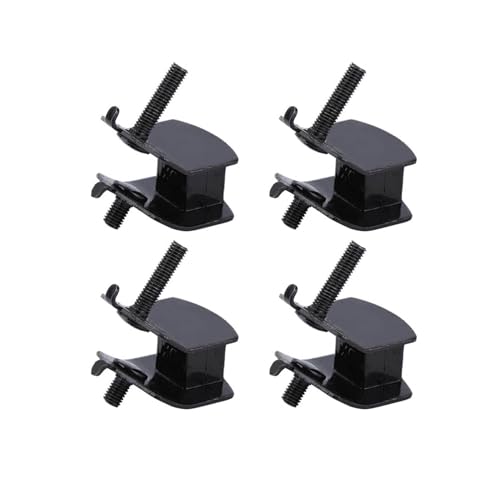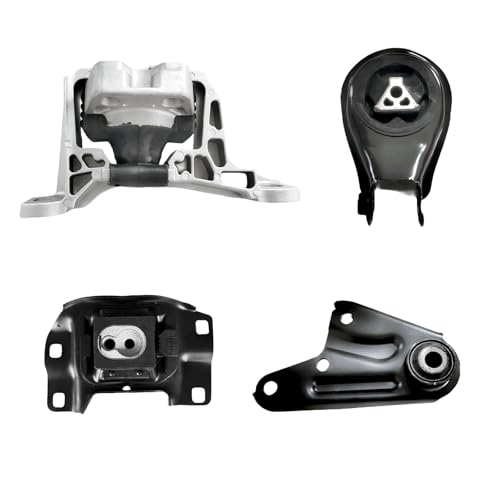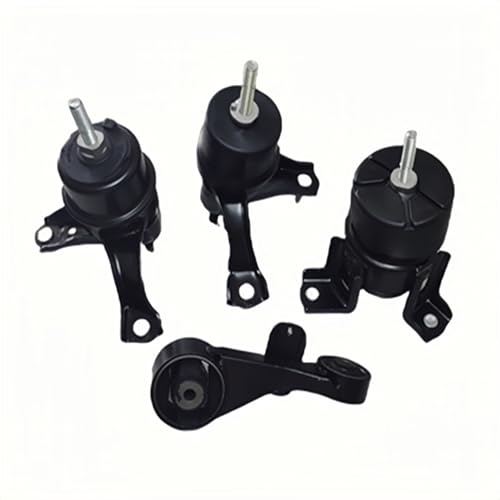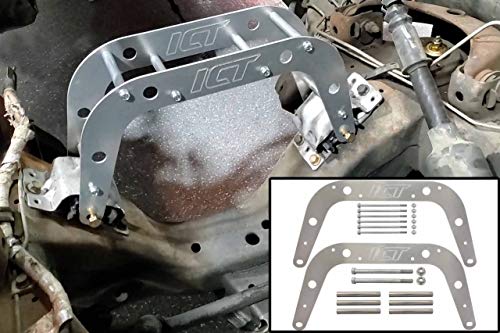Ever wonder how a powerful, shaking engine feels so smooth from the driver’s seat? You’re cruising down the road, and despite the controlled explosions happening under the hood, your cabin is calm and quiet. You might be focused on the clunking noise you hear when you accelerate or the strange vibration you feel at a stoplight, wondering what could possibly be wrong. The answer to both the smoothness and the problems often lies in a few small but mighty components.
Most cars have between three and four motor mounts, though the total number can range from two to six depending on the vehicle’s specific design, engine, and drivetrain. These critical parts are the unsung heroes of your car’s powertrain system, and understanding how many your car has is the first step to diagnosing issues and ensuring a safe, comfortable ride.
Leveraging extensive analysis of established vehicle data and repair patterns, this guide unpacks everything you need to know about your car’s motor mounts. We’ll go beyond just the numbers to explore why they exist, the different types you’ll find, the definitive signs of failure, and what you need to know about replacement. This guide provides the critical insights to help you effectively navigate any questions you have about your car’s motor mounts.
Key Facts
- The Common Count: Most modern passenger cars, especially those with front-wheel drive, are equipped with three or four motor mounts, a design choice that balances stability and vibration control effectively.
- Vibration is the #1 Symptom: The most frequently reported sign of a failing motor mount is excessive vibration felt inside the car, particularly when idling or accelerating, as the mount can no longer absorb the engine’s movements.
- They’re Not All the Same: Mounts have evolved from simple rubber blocks to advanced fluid-filled (hydraulic) and even active electronic systems in luxury cars, which offer superior and adaptable vibration control.
- Replacement Strategy Matters: While you can replace only a single failed mount, industry best practice often recommends replacing them as a set, because the failure of one mount puts significant extra strain on the others.
- It’s a Professional-Level Job: Due to the need to safely support a several-hundred-pound engine and use specialized tools, motor mount replacement is widely considered a task for a professional mechanic.
What is a Motor Mount and Why is it Essential for Your Car?
Motor mounts are essential components that secure your car’s engine to the frame, absorbing vibrations and noise to ensure a smooth ride and prevent damage. Think of them as the strong, flexible connections that manage the immense forces generated by your engine. Without them, driving would be an incredibly noisy, shaky, and damaging experience.
Their role is twofold, and both functions are critical for your vehicle’s health and your comfort:
- Securing the Engine: The primary job of a motor mount is to bolt the engine and transmission firmly to the subframe or chassis of the vehicle. This prevents the several-hundred-pound powertrain from shifting, lunging, or falling out during acceleration, braking, and cornering.
- Dampening Vibration and Noise: This is the function you can feel (or not feel). Engines naturally vibrate and produce noise. Motor mounts are designed with a cushion—typically made of dense rubber or filled with hydraulic fluid—that acts as a buffer. This material absorbs the engine’s vibrations, preventing them from traveling through the car’s frame and into the cabin.

To achieve this, most motor mounts are composed of a metal bracket that attaches to the engine, another metal bracket that connects to the car’s frame, and a block of vibration-absorbing rubber or a fluid-filled chamber sandwiched between them. This construction is key to enhancing driving comfort and preventing the engine’s movements from causing damage to other critical components like hoses, wires, and the exhaust system.
How Many Motor Mounts Does a Car Have? The Definitive Answer
Most cars have between three and four motor mounts, though the total number can range from two to six depending on the vehicle’s design and engine. This is the direct answer, but the specific count for your vehicle is determined by a few key engineering decisions.
According to extensive industry analysis of vehicle designs, the three-to-four mount configuration is the most common standard across the majority of sedans, SUVs, and light trucks on the road today. This range provides a robust balance of support and vibration dampening for most engine types.
While there’s a common range, the exact number for your car is a bit more specific. Some smaller, lighter vehicles might get by with just two or three, while larger trucks or cars with powerful, heavy engines might require five or even six mounting points to properly manage the weight and torque. Let’s explore what determines that number.
Key Factors That Determine the Number and Location of Mounts
The number and location of motor mounts are determined by engine size, vehicle weight, and drivetrain layout (front-wheel vs. rear-wheel drive), with different configurations designed to handle specific forces. Automakers don’t just pick a number at random; the entire system is engineered to counteract the physics of a running engine.
Pro Tip: One of these mounts is often dedicated to the transmission, sometimes called a ‘transaxle mount.’ It works as part of the same support system to hold the entire powertrain in place.
Here are the primary factors that dictate your car’s setup:
- Engine Size and Weight: A heavier and more powerful engine, like a V8, naturally generates more force and weighs more than a small four-cylinder engine. It will require more mounts, or more robust mounts, to keep it secure and absorb its vibrations.
- Engine Orientation: The most common layout in modern cars is a transverse engine, where the engine is mounted sideways in the engine bay. This is typical for front-wheel-drive (FWD) cars. This orientation causes the engine to rock forward and backward significantly during acceleration and deceleration, requiring specific mounts (often called torque struts or dog-bone mounts) to counteract this motion.
- Drivetrain Layout: A front-wheel-drive car has different support needs than a rear-wheel-drive (RWD) or all-wheel-drive (AWD) vehicle. The way torque is delivered to the wheels affects how the engine tries to move in the chassis.
To make this clearer, here’s a breakdown of common configurations:
| Vehicle/Drivetrain Type | Typical Number of Mounts | Common Configuration Notes |
|---|---|---|
| Front-Wheel Drive (FWD) | 3 – 4 | Often uses a transverse engine layout. Includes mounts to handle engine torque reaction (rocking motion). One mount is typically a dedicated transmission mount. |
| Rear-Wheel Drive (RWD) | 3 – 4+ | Engine is usually mounted longitudinally (front to back). May use two main engine mounts and one or two transmission mounts further back. |
| Trucks & Large SUVs | 4 – 6 | Heavier engines and frames require additional support points to manage weight and vibrations, especially in heavy-duty applications. |

The Difference Between Standard, Fluid-Filled, and Active Mounts
Mounts evolve from basic rubber blocks to advanced, fluid-filled or active electronic systems in luxury cars for superior vibration control. Not all motor mounts are created equal. The technology inside them directly impacts your driving experience.
- Standard Rubber Mounts: This is the most common and basic type. It consists of a block of hard, durable rubber sandwiched between two metal plates. They are effective and inexpensive, commonly found in economy cars and older vehicles.
- Fluid-Filled (Hydraulic) Mounts: These look similar to standard mounts but contain a chamber filled with hydraulic fluid. The fluid provides significantly better dampening across a wider range of engine vibrations, leading to a smoother and quieter ride. You’ll find these in most modern mid-range and luxury vehicles.
- Active/Electronic Mounts: This is the most advanced type. These mounts use vacuum pressure or electronics controlled by the car’s computer to actively stiffen or soften in real-time. They can counteract specific vibration frequencies as they occur, offering the highest level of comfort. This technology is typically reserved for high-end luxury and performance cars.
Top 5 Signs Your Car Has a Bad Motor Mount
The most common signs of a bad motor mount are excessive engine vibration, loud clunking or banging noises when shifting or accelerating, and visible engine movement under the hood. These components wear out over time from heat, stress, and exposure to fluids like oil. When they fail, the symptoms are usually hard to ignore.
If you’re noticing any of these signs, especially in combination, it’s a strong indicator that your motor mounts need inspection. Here is a diagnostic checklist of the top five symptoms:
- Excessive Vibration
- Why it happens: This is the number one symptom. When the rubber hardens and cracks or the hydraulic fluid leaks out, the mount can no longer absorb the engine’s normal vibrations. You’ll feel this most in the steering wheel, floor, or seats, especially when the car is idling in “Drive” or during acceleration.
- Loud Impact Noises
- Why it happens: Clunking, banging, or thudding sounds are a major red flag. A broken mount allows the engine to move excessively, causing it to hit the chassis or other components when you shift gears, accelerate hard, or brake suddenly.
- Visible Engine Movement
- Why it happens: A healthy engine should stay relatively still. With the hood open and the car in park with the emergency brake on, have a helper briefly rev the engine or shift from Drive to Reverse. If you see the engine lurch or rock significantly (more than an inch or so), a mount has failed.
- Rough Handling and Gear Shifting
- Why it happens: When the engine and transmission are not held securely, the linkage for shifting can be affected, leading to rough or difficult gear changes. The car may also feel generally unsteady or “loose” during turns as the powertrain’s weight shifts uncontrollably.
- Damage to Other Parts
- Why it happens: In severe cases, a loose engine can damage surrounding components. This can include broken hoses, frayed wires, or even damage to the exhaust manifold as the engine makes contact with parts it shouldn’t. This is why addressing a bad mount early is crucial.
Motor Mount Replacement: When and How
Motor mount replacement is typically a job for a professional mechanic, and while you can replace just the failed mount, replacing them all is often recommended as a preventative measure. Understanding when and how to approach this repair can save you from further damage and expense down the road.
Lifespan and Inspection
Quick Fact: Motor mounts are designed to last a long time, often around 60,000 miles or 5-7 years, but driving habits and oil leaks can shorten that lifespan significantly.
There’s no exact replacement interval for motor mounts, but it’s wise to have them inspected during routine maintenance, especially after the 7-year mark. A technician can check for cracked rubber, fluid leaks from hydraulic mounts, and excessive engine movement.
DIY vs. Professional Mechanic
Because replacing a motor mount requires safely lifting and supporting the full weight of the engine with specialized tools like an engine support bar or floor jack, it is highly recommended to have this service performed by a qualified professional. An error during this process can lead to significant damage to the vehicle or serious personal injury.
While it may seem like a simple part swap, accessing the mounts can be difficult in the cramped engine bays of modern cars. A mechanic will have the experience and equipment to perform the job safely and correctly.
Should You Replace All Mounts at Once?
This is a common question. While you technically only need to replace the one that has failed, there’s a strong case for replacing them as a set. The remaining original mounts have been subjected to the same age and stress as the one that broke. Furthermore, the failure of one mount puts additional strain on the others, often causing them to fail soon after. Replacing them all at once costs more upfront but can save you from repeated labor costs and vehicle downtime in the near future. It’s a classic case of preventative maintenance.
For those looking to tackle this job or other engine-related repairs, having the right tools is non-negotiable. A quality engine support bar and mount replacement tools can make the process safer and more efficient.
FAQs About Car Motor Mounts
How many motor mounts are typically on a car?
Most cars have between 3 and 4 motor mounts to secure the engine and transmission to the vehicle’s frame. This number can vary depending on the car’s size, engine type, and whether it’s front-wheel drive or rear-wheel drive, with the total sometimes being as low as two or as high as six.
What are the most common symptoms of a bad motor mount?
The primary symptoms of a failing motor mount are noticeable and often disruptive. These include:
* Excessive vibration felt in the cabin, especially at idle
* Loud clunking or banging noises during acceleration, braking, or gear shifts
* A visible rocking or lurching of the engine under the hood when revved
Do I need to replace all four motor mounts if only one is bad?
While you can replace only the broken mount, mechanics often recommend replacing all of them as a set. This is because a single failure puts extra stress on the remaining mounts, which are of the same age and condition and may fail soon after. Replacing them all at once is a common preventative measure that saves on future labor costs.
How much does it cost to replace engine mounts?
The cost to replace engine mounts varies significantly based on the car’s make and model, the type of mount used (e.g., fluid-filled vs. standard rubber), and local labor rates. Luxury cars with active electronic mounts will be much more expensive to repair than an economy car with simple rubber mounts. It’s best to get a specific quote from a trusted repair shop.
How many engine mounts does a Honda Civic or Toyota Corolla have?
Cars like the Honda Civic and Toyota Corolla typically have a configuration of three or four mounts. This is due to their common front-wheel-drive, transverse-engine layout. This setup usually includes two main mounts, a transmission mount, and often a “dog bone” or torque strut mount to control the engine’s rocking motion.
Final Summary: Key Takeaways on Your Car’s Motor Mounts
Understanding the what, why, and how many of motor mounts demystifies a crucial part of your vehicle’s powertrain. We’ve established that there isn’t one single answer to how many motor mounts does a car have, but rather an engineered solution specific to your vehicle, typically falling between three and four. More importantly, you’re now equipped to recognize the tell-tale signs of failure—the vibrations and clunks—and understand the best course of action for repair.
By grasping these core concepts, you can be a more informed car owner, better prepared to maintain your vehicle for a smooth, safe, and long-lasting driving experience.
- The Magic Number: Most cars have 3-4 mounts, a number dictated by engine size, weight, and drivetrain design.
- Listen to Your Car: Excessive vibration and loud clunking noises are clear distress signals from failing mounts that should not be ignored.
- Trust the Professionals: Replacement is a complex job that involves supporting the engine, making it a task best left to qualified mechanics for safety and accuracy.
Now that you understand the what, why, and how of motor mounts, pay attention to your car’s sounds and feelings. If you suspect an issue, don’t wait for it to get worse. Have it inspected by a professional to keep your ride smooth and prevent more costly repairs down the road
Last update on 2025-12-30 / Affiliate links / Images from Amazon Product Advertising API













